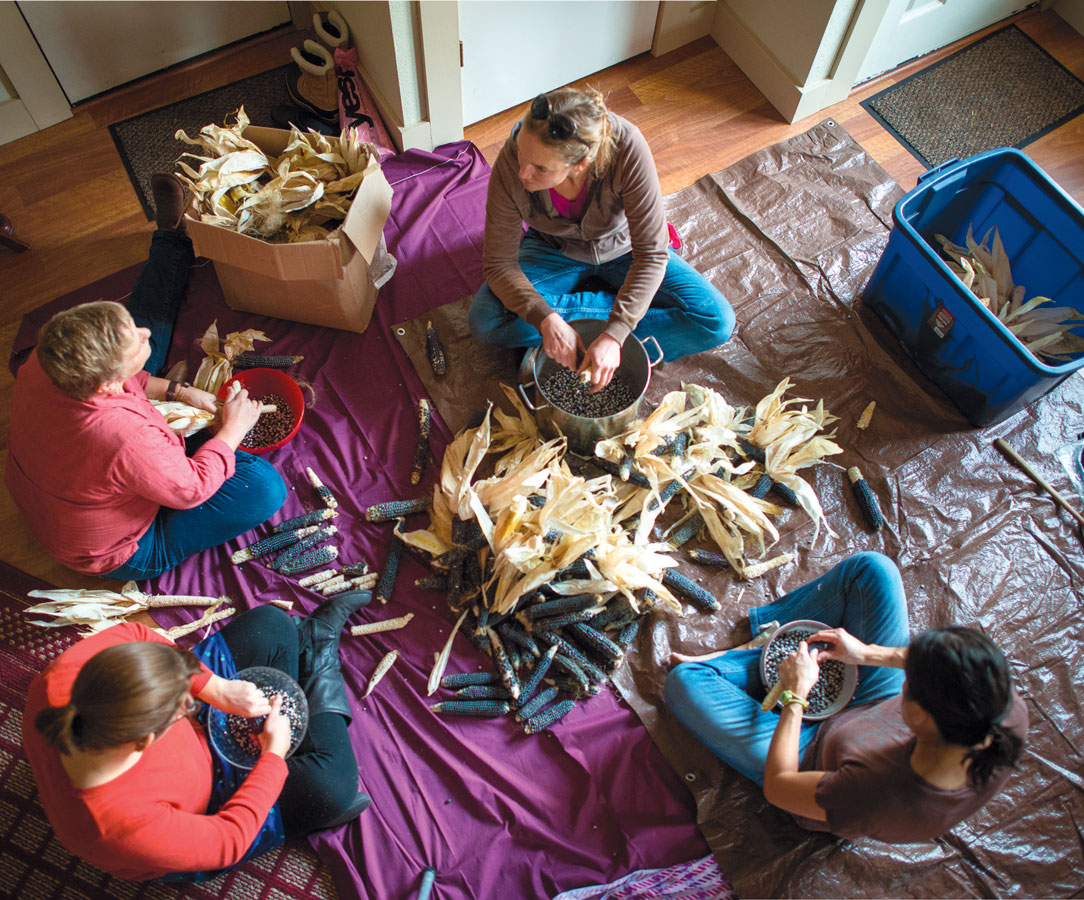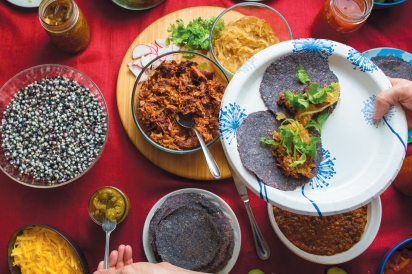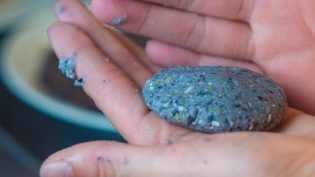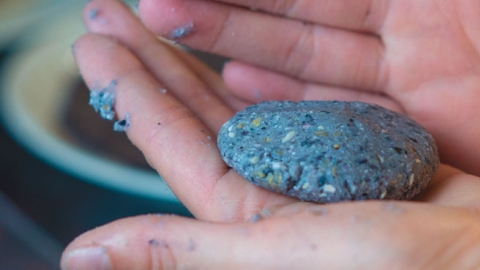Blue Corn Magic
Exploring a new world of agriculture —and culture
“What’s up with y’all’s tortillas,” asked one of our farm interns (a recent Texas transplant) during lunch one day. Who knew that such a simple question would lead to one of the most profound agricultural—and cultural—journeys of my life.
I agreed with her. It is hard to find a decent tortilla in Boise, and having logged some hours in Central America I knew how a decent tortilla should taste.
Still, it wasn’t until a seed saving workshop in Hagerman six months later, when my seed library partner Carrie Jones and I sampled the most complex and flavorful home-ground blue corn tortillas we’d ever eaten, that my quest began in earnest. We simply had to eat those tortillas again—and planted some Hopi blue corn on our small urban farm.
I don’t know what I was expecting. I’ve grown loads of sweet corn before, always with a slight sheepishness due to corn’s reputation as the piggish king of industrial agriculture. From the get-go, it was obvious this was a whole other experience. The kernels we planted were breath-taking gems and dried down to an astonishing blue color hidden behind papery husks. Every time I peeked inside a cob, it felt like I was opening a gift.
As we harvested the dried cobs in crisp fall air, the farm crew remarked on how connected we felt to the past, knowing entire civilizations had built themselves upon this ritual, thriving on a backbone of corn.
“It’s totally different,” remarked another intern. “A carrot, you grow it and pick it and eat it, but with this, the harvest is just the beginning.”
Once our blue corn cobs dried, I took the next step: I found Ester Ceja, a first-generation Mexican American who said she would teach us how to make tortillas. When I explained that we still had to get the kernels off the cobs, then asked, “Don’t we have to cook them with something first?” she grew excited. “Oh, wow, so you’re starting with desgranar?” she asked, using the Spanish word for the act of shelling. “I guess so,” I said.
Ceja assured me she could show us an easy way to remove the kernels, so five women and Carrie’s 2-year-old daughter Rosalie joined in a circle on the floor in Ceja’s living room, where we shucked the corn by rubbing one cob against another. To that rasping sound, Ceja brought her aunts’ small rancho in Michoacan vividly to life, describing how those women taught her to desgranar, nixtamalize (soak the corn overnight in lime water), then go to the old molino (mill) and grind the corn into masa for the day’s tortillas.
“My uncles get fresh tortillas for breakfast every morning,” she smiled, rubbing the kernels off the cobs with her strong hands.
The next night we invited more friends for a feast. We took turns grinding the cooked, nixtamalized corn, and Ester showed us how to add water—“You can just tell when there’s enough”—to make the masa, to form the balls in our palms and then press and cook them on a dry griddle. At first she was frustrated about the blue corn, how it was coarser and more difficult to work with than the yellow corn she was used to. She made a few tortillas out of store-bought masa for comparison, to show us how they normally ballooned up into soft pillows when they were done.
Still, the blue corn looked just as I remembered and sure enough, when I put a warm tortilla in my mouth, it contained the same earthy, complex flavor I’d experienced six months earlier. Our guests gathered their taco fixin’s together and we sat down to eat. Everyone was mesmerized by the blue corn, even Ceja.
One thing I’ve learned from growing blue corn is that it’s meant to be done communally. Corn needs other corn to grow—it won’t pollinate without other ears around. And it so obviously calls for a group of humans to do the rest. Desgranando hundreds of ears of corn, making dozens of tortillas, all would have been drudgery if done in isolation. Sadly, the growing of corn and making of tortillas today is mostly mechanized, solitary work.
When I asked one of my interns what she was thinking as we pressed our corn into tortillas, she immediately teared up. “I planted that!” she said softly. “I’ve got goose bumps. I put the seed in the ground, and now here we are making tortillas. I feel so lucky to be a part of this. It’s so much more than farming. It’s . . . everything.”







